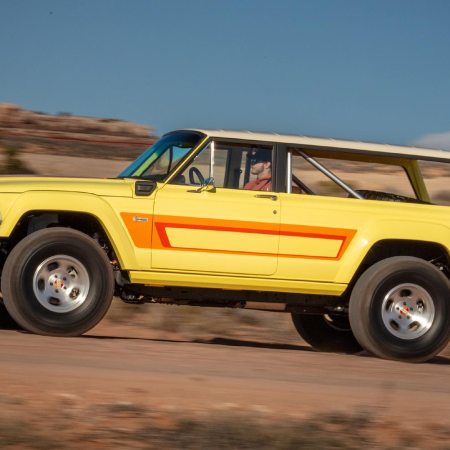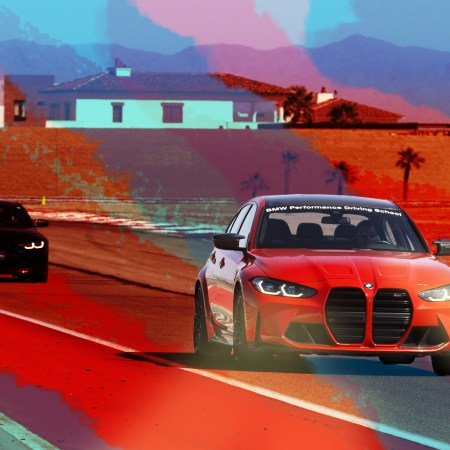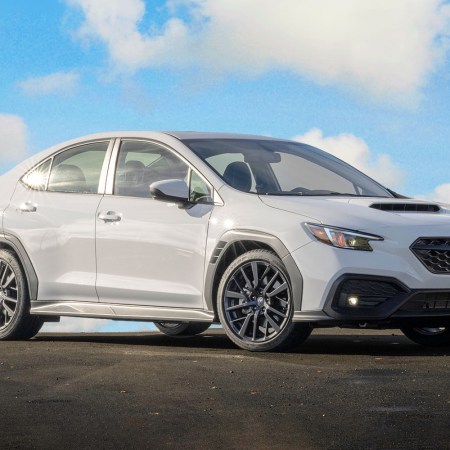Another piece of automotive history is going up in smoke: Next year will be the last for the Hellcat, the badge that Dodge and Jeep use for models with a supercharged V8 engine rated at 707 horsepower (or more). Dodge CEO Tim Kuniskis has announced plans to end the production of the 6.2-liter V8 engine in 2023, as the brand plans to ramp up production of an electric muscle car in 2024.
It’s an untimely end, if you appreciate internal-combustion mayhem. The Hellcat has been an unlikely success story since it arrived in 2016. Named after an American WWII aircraft, the Hellcat engine was from the outset, the largest factory engine in a production muscle car, and larger than one in any Dodge vehicle ever made, with integral charge coolers and an electronic bypass valve. The idea behind it was to set fire to any idea that Dodge built boring cars. It worked. Since its inception, Stellantis has sold somewhere in the high tens of thousands. Hellcat became a pop culture buzzword, dropped in hip hop lyrics from artists like Chief Keef and beyond.
Hellcats are social media stars, for good and bad. Not everybody can handle a street ride with more power than a NASCAR NextGen cup car. You’ve no doubt landed on videos of Hellcats getting crumpled up like toys. Just a few weeks ago, a driver crashed a Challenger Hellcat on LA’s new Sixth Street Viaduct bridge, slamming into another car after doing a smoky burnout. The clip went viral…and now the bridge is closed indefinitely.
And soon the Hellcat era will come to a close. And not because idiots tend to wrap them around trees. The writing is on the wall: the big engine’s thirst for fuel is such that it drags fuel economy downward, making it harder to hit corporate fuel economy standards. The future, even for muscle cars, is electric. And it’s coming sooner than you might think.
So let’s enjoy the present, shall we? I did, at least. Last month a 2022 Challenger SRT Hellcat Widebody arrived on my driveway wearing a cement gray paint job called Smoke Show. Its sticker price started at $63,530, but with options like a widebody kit (fender flares, an upgraded suspension, 20″ wheels), an eight-speed automatic, and an upgraded interior (Alcantara seats), the price topped out at $88,070. In the cupholder was a “red key,” which unlocked the car’s full capabilities.
Those capabilities were plentiful, reader. I miss the Hellcat already, and I will be mourning its loss in the future. You quickly get used to its point-and-shoot power, and you quickly internalize its unlikely vectors in traffic. You might assume that the Challenger Hellcat is all about insane off-the-line speed, but that’s not exactly where this beast excels: its four second zero-to-sixty mph time is four seconds, which is impressive, but about the same as and Audi S6. The Hellcat really feels special when you’re already moving at a quick clip, then push it for more. On the open road, you notice that the Hellcat is made to go from fast to faster. When you need to perform an evasive maneuver on the highway, or jolt into the carpool lane at the last second, or make the traffic behind you disappear, the Hellcat is your friend.
After several stints in both Challenger and Charger Hellcat models over the years, the most shocking thing about them to me is not necessarily their raw power, but the fact that they’re relatively easy to live with. They’re exotics, but the drive isn’t compromised when you’re only running at 5/10. And hilariously, a carseat easily fits in back. Yet they are not perfect cars for parenting: idling a car with a 2/10 EPA greenhouse gas rating and a 1/10 smog rating outside of your kid’s elementary school isn’t going to score you any points with the moms.
As sad as it is to lose the Hellcat, the truth is that purpose-built electric muscle cars will perform even better, in a lot of ways. While range may suffer at first, Horsepower numbers will go up, and all that power and torque will be available instantly, easier to corral and control. Until then, you still have some time to score a Hellcat. Rumors are flying that a final model may boast over 900 horsepower, and run on E85. Start saving up…for the fuel bills!
This article was featured in the InsideHook newsletter. Sign up now.






















